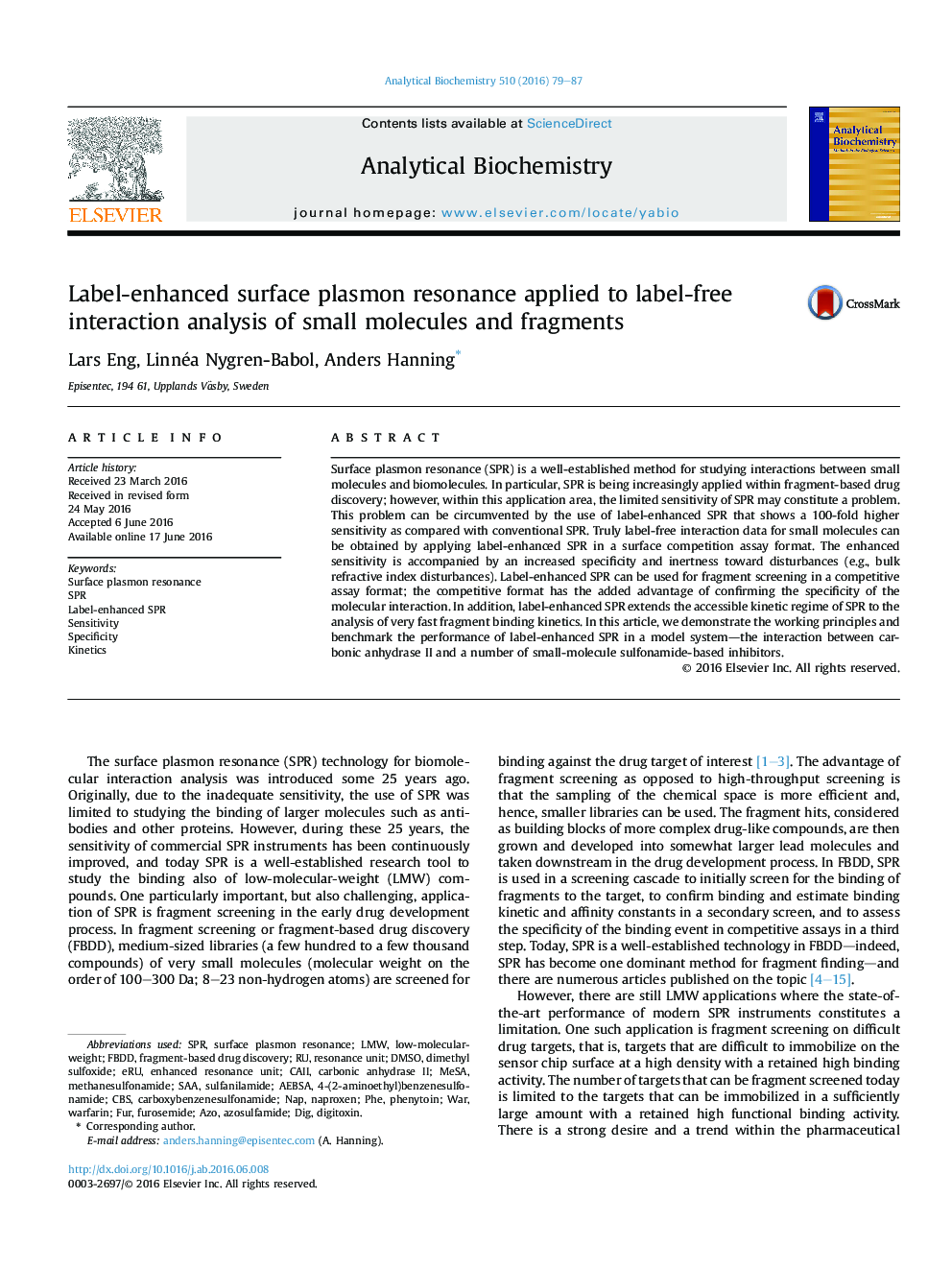| Article ID | Journal | Published Year | Pages | File Type |
|---|---|---|---|---|
| 1175297 | Analytical Biochemistry | 2016 | 9 Pages |
Surface plasmon resonance (SPR) is a well-established method for studying interactions between small molecules and biomolecules. In particular, SPR is being increasingly applied within fragment-based drug discovery; however, within this application area, the limited sensitivity of SPR may constitute a problem. This problem can be circumvented by the use of label-enhanced SPR that shows a 100-fold higher sensitivity as compared with conventional SPR. Truly label-free interaction data for small molecules can be obtained by applying label-enhanced SPR in a surface competition assay format. The enhanced sensitivity is accompanied by an increased specificity and inertness toward disturbances (e.g., bulk refractive index disturbances). Label-enhanced SPR can be used for fragment screening in a competitive assay format; the competitive format has the added advantage of confirming the specificity of the molecular interaction. In addition, label-enhanced SPR extends the accessible kinetic regime of SPR to the analysis of very fast fragment binding kinetics. In this article, we demonstrate the working principles and benchmark the performance of label-enhanced SPR in a model system—the interaction between carbonic anhydrase II and a number of small-molecule sulfonamide-based inhibitors.
